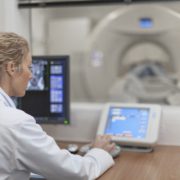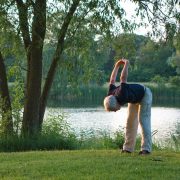Three Ways You’re Getting Back Pain Treatment Wrong
If you’re over the age of 40 and reading this, odds are pretty good that you’ve experienced back pain at least once in your life. In fact, four out of five people are impacted by back pain, and for many, it’s a constant back-and-forth year after year. Keep reading to learn three ways you could be getting back pain treatment wrong.
The first thing you need to understand is that back pain is normal. It’s hard to combat the everyday stressors our modern-day lifestyles impose on our spine. We simply weren’t meant to sit for hours each day or be crouched over electronic devices. Rather than have unrealistic expectations about pain-free lifestyles, we should instead be focusing on ways to naturally manage our own back pain.
Now keep in mind, I make a living off helping people recover from debilitating back pain. But that doesn’t mean I want you to suffer. Here are three ways we’re getting back pain treatment wrong.
1. Quick fixes and passive modalities.
Reliance on quick fixes or passive modalities is how most people attempt to treat their back pain. It’s also the number one reason why back pain returns. A passive modality is something that is done to you vs something you actively do on your own. It’s where you walk in somewhere, lie on a table, and receive some kind of treatment. This could be chiropractic care, massage, acupuncture, or even injections and surgery. You have no active role in the process – it’s completely passive.
Now, I’m not saying there is anything wrong with these treatments. They are great for easing symptoms related to back pain – especially tight, spasmatic muscles. (I have back pain myself and get a massage once per month.) But they shouldn’t be used in isolation. They need to be part of a more comprehensive, movement-based approach to addressing back pain at its source. Plus – you’ll find the relief you get from passive modalities is almost always temporary. And when your pain keeps coming back – it’s a sure sign you’re missing something. Don’t get back pain treatment wrong by relying on passive modalities.
2. Letting MRI’s make the decision.
Traditionally, the medical community diagnoses your back pain with images. If you’ve had back pain for a while, and especially if you’ve already tried some physical therapy, doctors will prescribe an MRI to “see what’s going on” inside your spine. The problem is that what shows up in your MRI doesn’t always correlate with what’s causing your back pain. In fact, 60% of the time, what you see on your MRI has nothing to do with the root source of your problem.
For example, your MRI might show a bulging disc in your spine. Well, did you know that bulging discs are normal and occur naturally as you age? You could have two people with the same bulging disc on their MRI and one will have zero back pain.
Why? Because the root cause of back pain is more complicated than your anatomy. Evidence from research tells us that 70-80% of all back pain is primarily caused by restrictions in your mobility – which is influenced by your habits and the way you move – not by what’s going on structurally in your spine.
So if your doctor lets your MRI make the decision, and recommends surgery to cut out a bulging disc that isn’t even the source of your real back problem, you’ve not only wasted a surgery, but wasted even more time not addressing the real cause of your pain. Letting MRI’s dictate your treatment plan is one of the most overlooked ways we’re getting back pain treatment wrong.
3. The wrong exercises.
One of the biggest problems I see when it comes to treating back pain is non-specific, non-prescriptive, generalized exercises that are designed to make you strong and perhaps even target your core – but it’s before the real problem gets addressed.
Almost 90% of the time, back pain is due to immobility in your spinal joints (vertebrae) that causes irritation of surrounding structures in your spine – such as discs, nerves and ligaments. What we know to be true is that these mobility restrictions can be freed up with very specific movements, in very specific directions, using a very specific frequency during the day.
Once the restriction in your spine is free and you’re moving normally, you can do any exercise of your choosing. It’s at this point that strengthening your core, for example, is beneficial. Because a strong core helps prevent future back pain episodes (but it doesn’t cure a current back pain episode).
To figure out which specific move you need to address your back pain will require help from an expert. But the good news is once you know what movement gets rid of your back pain, you can use it time and again to manage it on your own. But generalized exercises, when done too soon, is another big way we’re getting back pain treatment wrong.
If you’ve been suffering from back pain longer than you should, I hope this information helps you figure out where you might have been steered wrong.
It’s worth getting help from a back pain specialist who emphasizes corrective, prescriptive movement as a means to recovery – vs quick fixes, MRI’s, and generalized exercises.
Want help from one of our specialists? Request a Free Discovery Call HERE to see if you’re a good fit for what we do.
Dr. Carrie Jose, Physical Therapist and Pilates expert, owns CJ Physical Therapy & Pilates in Portsmouth and writes for Seacoast Media Group. To request a free copy of her guide to back pain CLICK HERE or visit her website at cjphysicaltherapy.com.












